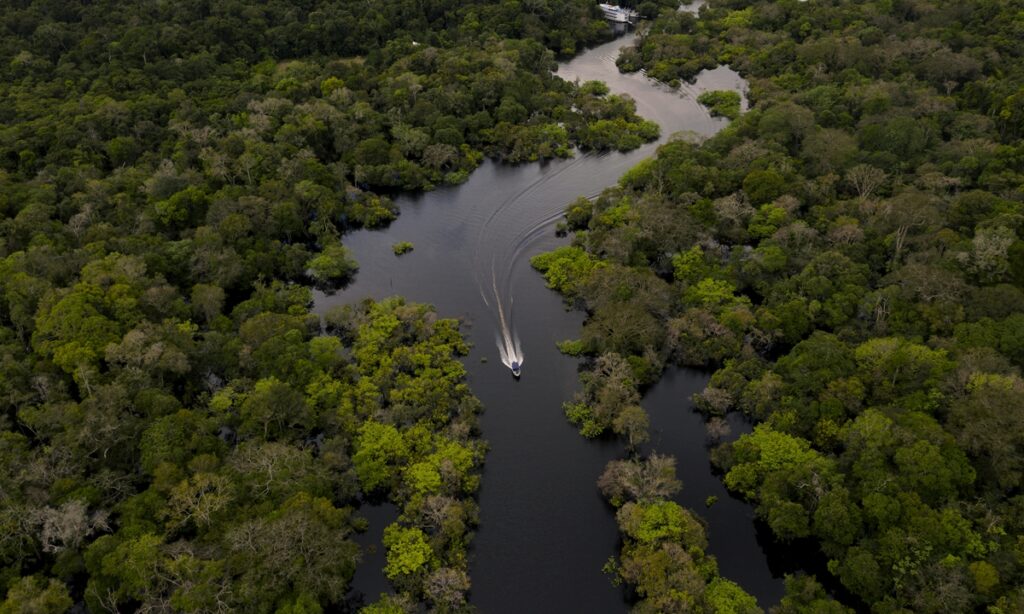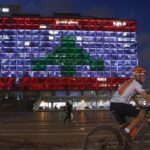The indigenous peoples of the Amazon have already seen their homelands ravaged by illegal deforestation, industrial farming, mining, oil exploration and unlawful occupation of their ancestral territories.
Now, the coronavirus pandemic has magnified their plight, just as the forest fires are raging once more.
The Amazon, the world’s largest tropical rainforest, is a vital resource in the race to curb climate change – it spans over 7.4 million square kilometers.
It covers 40 percent of the surface area of South America, stretching across nine countries and territories: Brazil, Bolivia, Colombia, Ecuador, French Guiana, Guyana, Peru, Suriname and Venezuela.
Around three million indigenous people – members of 400 tribes – live there, according to the Amazon Cooperation Treaty Organization (ACTO). About 60 of those tribes live in total isolation.
The following is a look back at how the novel coronavirus spread through the Amazon jungle, and how those communities are handling the crisis.
Isolated but not protected
In mid-March, panic struck Carauari, in western Brazil.
Carauari is home to one of the most isolated communities in the world, and is only accessible by a week-long boat ride from Manaus, the nearest major city.
At first, the virus was seen as a threat that was well removed from the multi-colored houses on stilts that overlook the Jurua river, a tributary of the Amazon.
But the announcement of the first case in Manaus, the regional capital of Amazonas state, quickly sowed panic in the community.
Many in Carauari recalled how diseases brought by European colonizers ripped through the native populations in the Americas, nearly eliminating them altogether due to their lack of immunity.
“We’re praying to God not to bring this epidemic here. We’re doing everything we can – washing our hands often, like they tell us on TV,” said Jose Barbosa das Gracas, 52.
The first confirmed case among Brazil’s indigenous population was confirmed in early April: a 20-year-old health care worker from the Kokama tribe who lived near the Colombian border.
She had worked with a doctor who also tested positive.
Calls for help
Sensing the mounting threat, indigenous leaders and celebrities sounded the alarm, warning that Amazonian indigenous communities could face annihilation without help.
“There are no doctors in our communities. There is no protective gear to aid prevention,” Jose Gregorio Diaz Mirabal, the elected leader of the collective of Amazon indigenous organizations, said in late April.
For Yohana Pantevis, a 34-year-old inhabitant of Leticia, in Colombia’s Amazonas state, “falling ill here is always scary, but now we’re more afraid than ever.”
Brazilian-born photojournalist Sebastiao Salgado, known for his work in the Amazon, warned of the “huge risk of a real catastrophe.”
“If the virus gets into the forest, we don’t have a way to get help to them. The distances are so huge. The indigenous people will be abandoned,” said the 76-year-old.
“I call that genocide – the elimination of an ethnic group and its culture,” he said, accusing the government of Brazil’s far-right President Jair Bolsonaro of anti-indigenous policies.
In early June, iconic indigenous leader Raoni Metuktire accused Bolsonaro of wanting “to take advantage of this disease.”
“He’s saying, ‘Indians have to die, we have to finish them off,'” he said in an interview.
Running scared
In mid-June, the little indigenous village of Cruzeirinho in Brazil with its wooden huts was left practically deserted as most inhabitants, fearing coronavirus infection, fled into the jungle.
They “preferred to take everything they had with them into the forest and avoid contact with others,” said resident Bene Mayuruna, who was among the few who stayed.
The Brazilian army deployed a team of health workers to Cruzeirinho to provide care for the remaining members of the tribe.
Medicinal plants and barricades
A week’s journey by boat from Cruzeirinho, the inhabitants of the Umariacu indigenous reserve adopted a different strategy: They blocked all outsiders from their villages.
“Attention: indigenous land. Closed for 15 days,” said a hand-painted sign next to a roadblock at the entrance to the reserve.
The area covers 5,000 hectares in northern Brazil near the Peruvian and Colombian borders, and is home to about 7,000 people.
To avoid any dependence on the often maxed-out Brazilian public health system, indigenous people often turn to their ancestral traditions.
In mid-May, members of the Satere Mawe ethnic group, wearing colorful feather and leaf headdresses, scoured the river in search of medicinal plants.
“We’ve been treating our symptoms with our own traditional remedies, the way our ancestors taught us,” said Andre Satere Mawe, a tribal leader who lives in a rural area on the outskirts of Manaus.
The Satere Mawe remedies include teas made from the bark of the carapanauba tree, which has anti-inflammatory properties, or the saracuramira tree, an anti-malarial.
In Manaus, Maria Nunes Sinimbu saw five members of her family die of COVID-19 in less than a month, including three of her 12 children.
In late July, the Pan-Amazonian Church Network said more than 27,500 indigenous people belonging to 190 tribes had been infected on the continent with over 1,100 deaths.
Among the victims have been important tribal leaders such as Paulinho Paiakan and Aritana Yawalapiti in Brazil, and Peru’s Santiago Manuin.
A boat speeds on the Jurura river in the Brazilian Amazon forest on March 15. Photo: AFP




